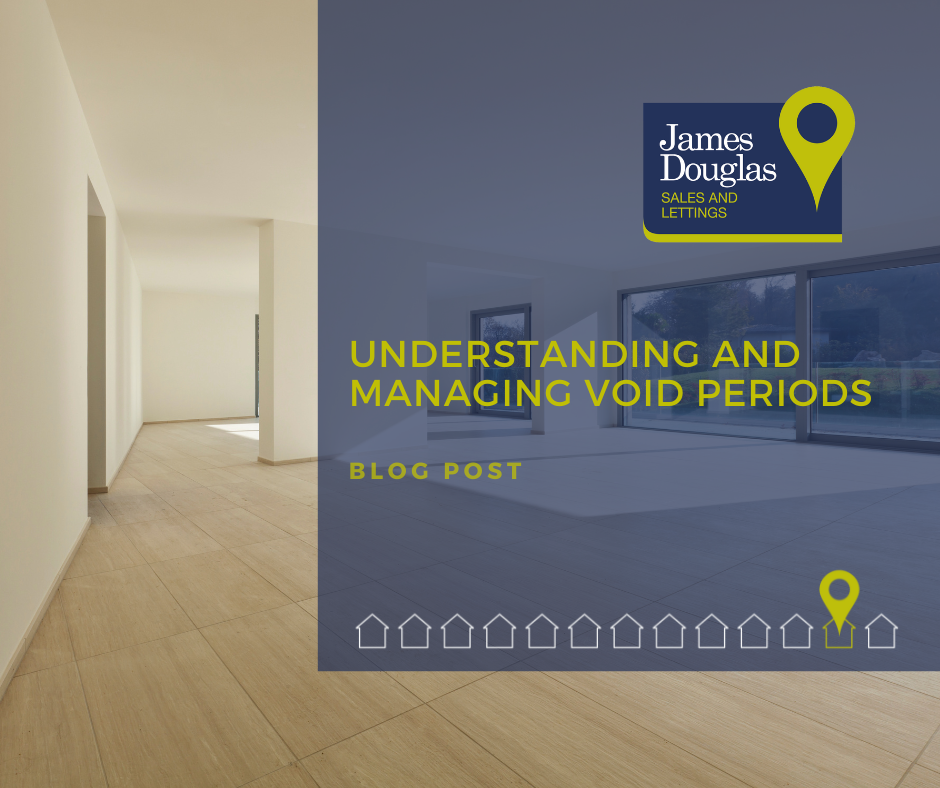Void Periods: Understanding and Managing Them
Tenants may not always stick in buy-to-let properties, as all landlords are aware, and so it is important to understand and manage void periods. Most tenants eventually start thinking about downsizing, upsizing, purchasing their own home, or moving for their jobs. Being a tenant or a landlord both have natural life cycles. Whenever tenants do leave a property, void periods—the interval between the old tenant leaving and the new renter moving in—are frequently created.
Without a question, void periods are one of the major elements affecting a buy-to-let property’s income. Properties that are vacant are nevertheless required to pay their mortgages, maintenance costs, insurance premiums, and other associated taxes and fees.
Therefore, prolonged void times can adversely affect the monthly cash flow and annual profitability of buy-to-let properties. Before one ever buys a home, decisions can be made on how to handle void periods.
What are Common Void Periods?
At some point, void periods will occur in every buy-to-let property. Depending on the renter and the property, void periods could happen every year or once every ten years. They do take place, and that much is certain. What constitutes a reasonable or typical vacant period is the question that landlords must ask.
According to Statista’s survey of 200 landlords in the UK between 2013 and 2019, the typical property will have an average vacancy duration of about 3 weeks per year. Although historically this has changed and has been as low as 2.4 weeks, it makes sense to consider 3 weeks as a solid general guideline. However, this was studied again between January 2020 to June 2021, by Region. The South West of the United Kingdom (UK) had the shortest average void period length as of June 2021. Following a decline from 18 days in May 2021, rental properties remained empty on average for eight days during that month. Though this varies by region, location, property prices and cost of living.
Purchasing Properties That Reduce Void Periods
In fact, choosing a property to buy and rent out is one of the most crucial choices a landlord can make to handle gap times. Average void periods might vary depending on geography and property type. Therefore, investors and landlords should take a property’s “let-ability” into account. Specifically, its appeal to tenants and the kind of tenants it draws.
According to logic, student apartments are most desirable when they are close to colleges and other student neighbourhoods. Families prefer to reside in suburbs close to schools and other amenities, while professional rentals are best suited to city centres or commuter locations. The finest neighbourhoods to buy a property in and the key elements affecting a property’s capacity to rent can both be refined with an understanding of the kind of tenant you hope to attract.
Finding the essential attributes that the appropriate tenant type values in a property comes next after a tenant type and location have been identified. Family-friendly communities, ample internal community space, manageable yet reasonable-sized gardens, and parking options are some features that may draw families to a property. In contrast, a young professional in a central city location can place more value on contemporary décor, parcel or concierge service, and adequate soundproofing.
Lastly, there are other factors to think about while selecting the kind of property. Service fees and ground rent are common in apartments. Regardless of whether the property is rented out, these fees must be paid. As a result, the average monthly cost of a flat may be higher than that of a home with a comparable price. This may have a bigger detrimental impact on the monthly cash flow for void periods.
Property Rental is Similar to Product Sales
A Blank Page
There is just something alluring about the scent of new paint, much like the smell of a new car. Consider void times as a chance to clean up a place before the next tenant moves in. Choosing colour palettes that work for all of your properties is a wise choice. By doing this, you’ll save time and money and have extra paint on hand for touch-ups.
The Exterior Appeal
Some people assert that a first impression is formed in just 30 seconds. In light of this, giving careful thought to how your home is first perceived can affect its ability to rent and shorten void periods. Professional landlords may want to take into account:
- To make the entrance path look cleaner, pressure wash it.
- Pruning bushes, mowing lawns, and painting fences will help tidy up the front garden.
- If the current front door is outdated, replace it.
Viewing Experience
Viewing a property ought to be considered an adventure. Potential can’t always be seen by everyone. As a result, not every tenant will find a property to be as appealing as you do. Nevertheless, you can take measures to enhance a potential tenant’s impression of a house upon viewing.
First of all, vacant buildings might smell. Anyone who has returned after a protracted vacation is accustomed to opening the front door and being met by an unusual odour. Landlords can let fresh air in by opening windows and doors before viewings. Landlords who use leasing agents or don’t have the time to do this may wish to think about strategically hiding automatic air fresheners.
Ensuring guarantee that properties are seen in the best possible light is the second step. Try to schedule viewings during times during the day when there is enough light. Make sure the lights are on and that all of the blinds and drapes are open before doing so. Darker rooms seem smaller compared to brighter ones.
Create a sense of limited availability, and that’s all. Landlords must naturally become into salespeople when performing a viewing. Effective salespeople employ strategies to alter the perceptions of potential customers of a product. It can be inferred that the property is desired and unique by mentioning additional viewings and interested parties.
Using an Agent
Landlords should first evaluate the likelihood that they will find tenants directly or use the services of a letting agent. Even though it might be an extra cost for landlords to use agents, property professionals have access to a pool of potential tenants. They also possess the expertise and market understanding necessary to successfully advertise and present a property. This can shorten void periods, save landlords time, and money in the long run.
Property markets go through cycles. The greatest seasons for renting out homes are often spring and early summer, with October through December being the least busy. Given this, it may be a good idea to entice tenants to sign leases that expire during or right before the busiest seasons of the year. As a result, void periods can be planned and houses won’t go on the market right before Christmas, when there aren’t as many interested tenants.
The timing of void periods should be taken into account from a portfolio perspective by landlords who own many properties. Even while it is typically advised that landlords have enough cash on hand to cover void periods, it may still be exceedingly difficult if every property in a portfolio is vacant at once. particularly if an unexpected maintenance expense occurs.
If you are struggling to rent out your property and need some extra help, our team of expert professionals is here to help you. Contact the James Douglas team here.

